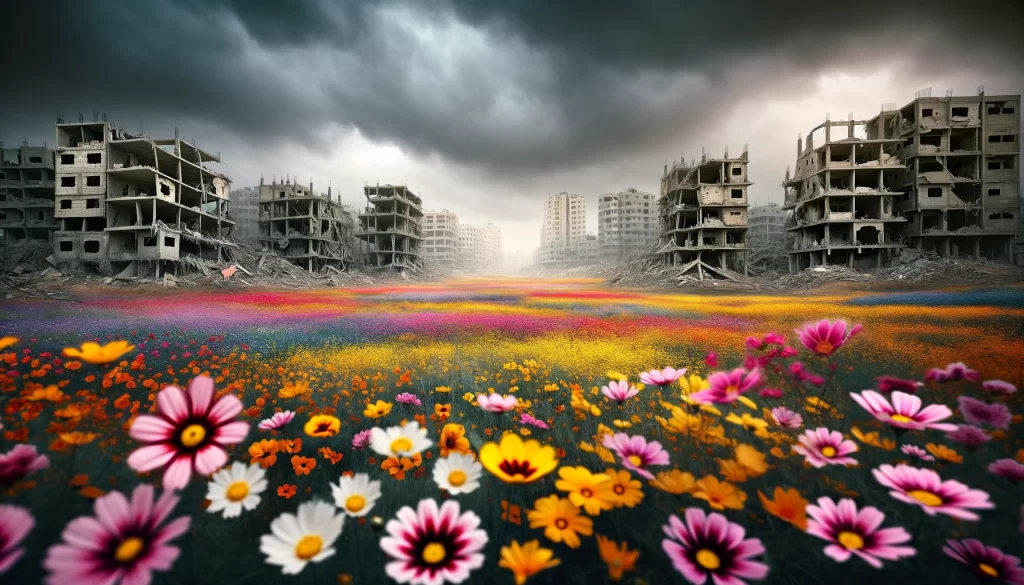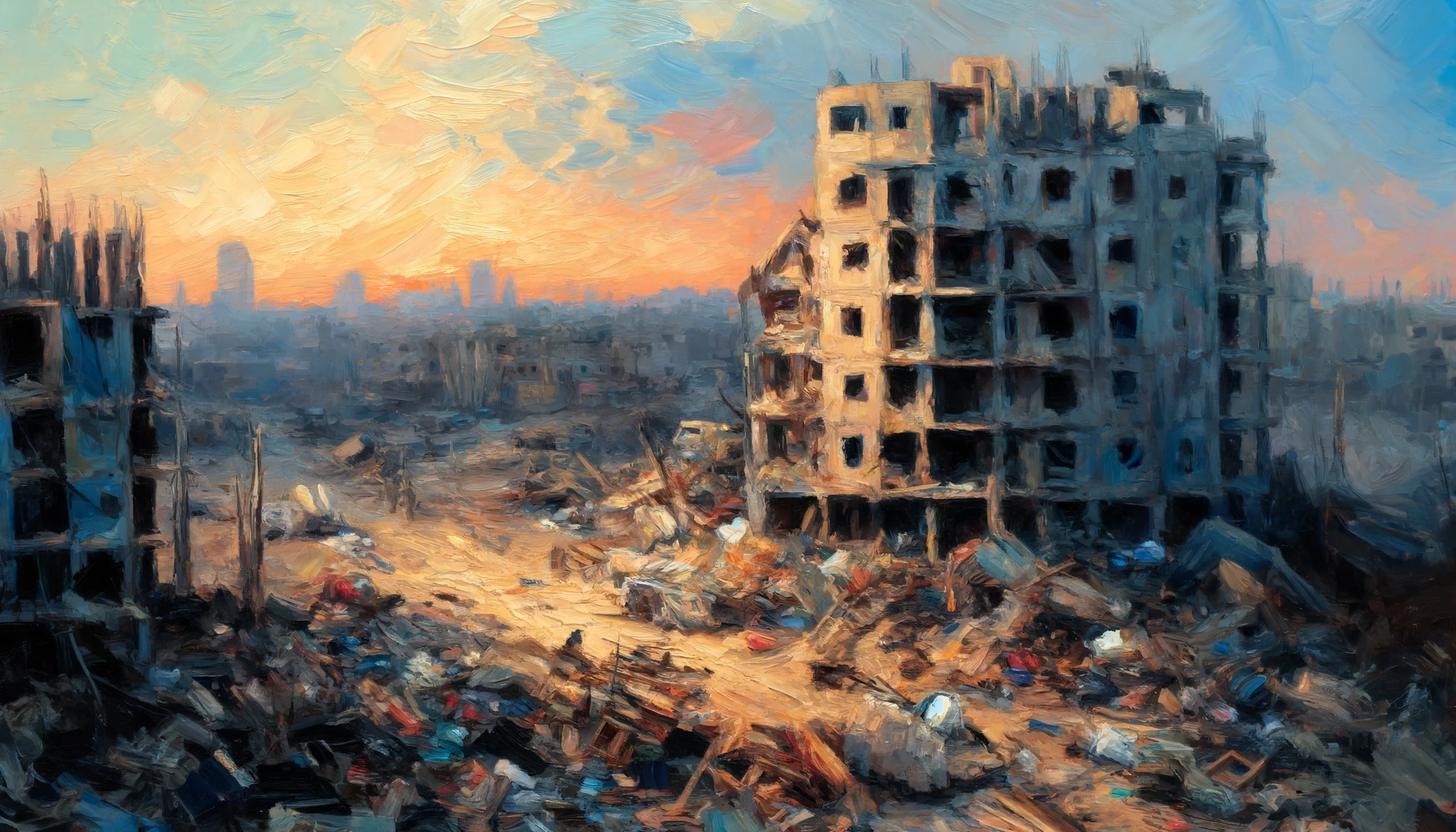Israeli airstrikes in the southern city of Rafah in the Gaza Strip overnight resulted in the deaths of 22 individuals, including 18 children, according to health officials. This tragic event occurred as the United States Congress was preparing to approve a significant increase in military aid to Israel.
Rafah, located on Gaza’s southern border with Egypt, has become a refuge for many of Gaza’s 2.3 million inhabitants who are fleeing the conflict that has engulfed the region. Despite international pleas for moderation, including from the United States, Israeli forces have continued their air assaults on the area and are planning to intensify their ground operations against Hamas, the militant group in control of Gaza.
Prime Minister Benjamin Netanyahu of Israel emphasized the need for increased military and political measures against Hamas, stating, “In the coming days, we will increase the political and military pressure on Hamas because this is the only way to bring back our hostages and achieve victory. We will land more and painful blows on Hamas – soon.”
The impact of the conflict in Rafah was devastating. In one instance, an Israeli strike killed a man, his pregnant wife, and their 3-year-old child. Although the child was killed, doctors were able to save the unborn baby. Another horrific attack resulted in the deaths of 17 children and two women, all from the same extended family. According to Umm Mohammad, a relative of the family, the violence of the strikes was so severe that her 80-year-old relative was found in pieces, and many of the children were placed into body bags.
Local residents are in mourning and disbelief. Umm Kareem, another relative of the victims, questioned, “These children were sleeping. What did they do? What was their fault?” Mohammed al-Beheiri, a member of the victims’ family, reported the loss of his daughter and her six children, with additional family members still trapped under the rubble at the time.
The ongoing conflict has caused significant casualties and damage throughout Gaza, particularly in its largest cities. Over 34,000 Palestinians have died, with a substantial proportion being women and children. The infrastructure has been heavily damaged, and many people have been displaced within the region.

In response to the humanitarian crisis, the U.S. House of Representatives approved a $26 billion aid package, which includes approximately $9 billion dedicated to assisting Gaza. This aid is critical as Gaza faces severe shortages and is on the brink of famine. The Senate is expected to pass this package soon, with President Joe Biden ready to sign it into law.
The war, which has now lasted for seven months, has not only affected Gaza but also increased tensions across the region, including direct exchanges of fire between Israel and Iran, raising fears of a wider conflict. In the Israeli-occupied West Bank, violence has also escalated with recent incidents including Israeli forces killing two young Palestinians who allegedly attacked a checkpoint.
The Palestinian Red Crescent has been actively involved in rescue operations, recovering bodies from various sites, including those of militants and civilians. In another violent episode, an Israeli man was injured by an explosive device after disturbing a planted Palestinian flag.
Since the beginning of the conflict, sparked by a raid by Hamas into southern Israel on October 7, the toll has been heavy on both sides. Hamas killed about 1,200 people, mostly civilians, and took approximately 250 hostages during their initial attack. Israel contends that about 100 hostages remain captive.
The ongoing strife has prompted widespread protests in Israel, with citizens demanding new leadership and negotiations for the release of hostages. Prime Minister Netanyahu, however, has reiterated his commitment to continuing the conflict until Hamas is defeated and all hostages are freed.
As the war continues, the number of casualties continues to rise, with tens of thousands of Palestinians reported killed or wounded. The situation remains dire, with ongoing military actions frequently resulting in civilian casualties, which Israel attributes to Hamas’ tactics of operating within densely populated areas.
This article is based on the following article:
https://apnews.com/article/israel-hamas-war-news-04-21-2024-8c027f2587c2c433d0fde41b63a0e0c3

Background Information
Understanding these background elements will help readers better comprehend the complex dynamics and the tragic human consequences described in the article about the ongoing conflict in Gaza.
Historical Context
- The Creation of Israel and the Palestinian Exodus (1948):
- In 1948, the state of Israel was established. This event, known as the “Nakba” or catastrophe among Palestinians, led to the displacement of hundreds of thousands of Palestinians from their homes.
- The Six-Day War (1967):
- Israel captured Gaza, the West Bank, and East Jerusalem during the Six-Day War. These areas are collectively referred to as the Occupied Palestinian Territories. The United Nations has repeatedly called for Israel to withdraw from these territories.
- Intifadas and Ongoing Conflicts:
- There have been several significant Palestinian uprisings, known as Intifadas, against Israeli occupation. The first began in 1987 and the second in 2000, both marked by extensive violence.
Political Entities
- Hamas:
- Hamas is a Palestinian Islamist political organization and militant group that has controlled the Gaza Strip since 2007. It is considered a terrorist organization by Israel, the United States, and the European Union, among others. Hamas’ governance of Gaza is a significant point of tension with Israel.
- The Palestinian Authority (PA):
- The PA was established as part of the peace process and is responsible for governing parts of the West Bank. However, it has limited power in Gaza since Hamas took control.
- Israeli Government:
- The government of Israel is a parliamentary democracy. The Israeli military is a powerful institution in the state, given the ongoing security issues related to its relationships with neighboring countries and territories.
Geographical Considerations
- Gaza Strip:
- The Gaza Strip is a small region on the eastern coast of the Mediterranean Sea. It borders Egypt on the southwest and Israel on the east and north. It is densely populated and economically underdeveloped, partly due to a blockade imposed by Israel and Egypt since 2007, aimed at restricting the movement of goods and people to prevent attacks from militant groups like Hamas.
- West Bank:
- The West Bank is a landlocked territory to the east of Israel. It is home to numerous Palestinian towns and villages as well as Israeli settlements, which are considered illegal under international law, though Israel disputes this.
Recent Developments
- Peace Efforts and International Response:
- Various international efforts have been made to resolve the conflict, including peace talks brokered by the United States. However, these have largely stalled in recent years.
- Humanitarian Issues:
- Gaza faces significant humanitarian challenges, including limited access to clean water, electricity, and medical care due to the ongoing blockade.
- Military Aid:
- The United States has been a longstanding ally of Israel, providing extensive military aid, which is a point of contention for many who see it as a factor in prolonging the conflict.

Debate/Essay Questions
- Is the significant military aid provided by the United States to Israel justifiable?
Please subscribe to Insight Fortnight, our biweekly newsletter!
